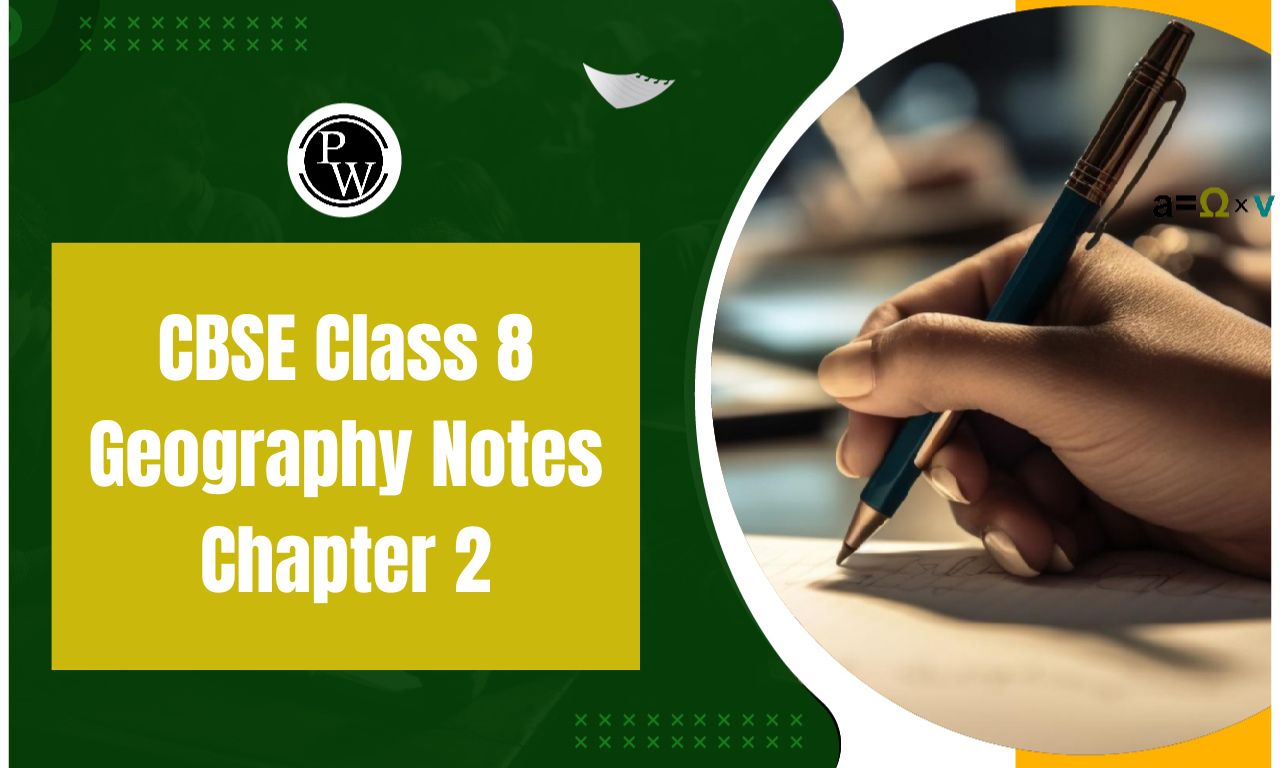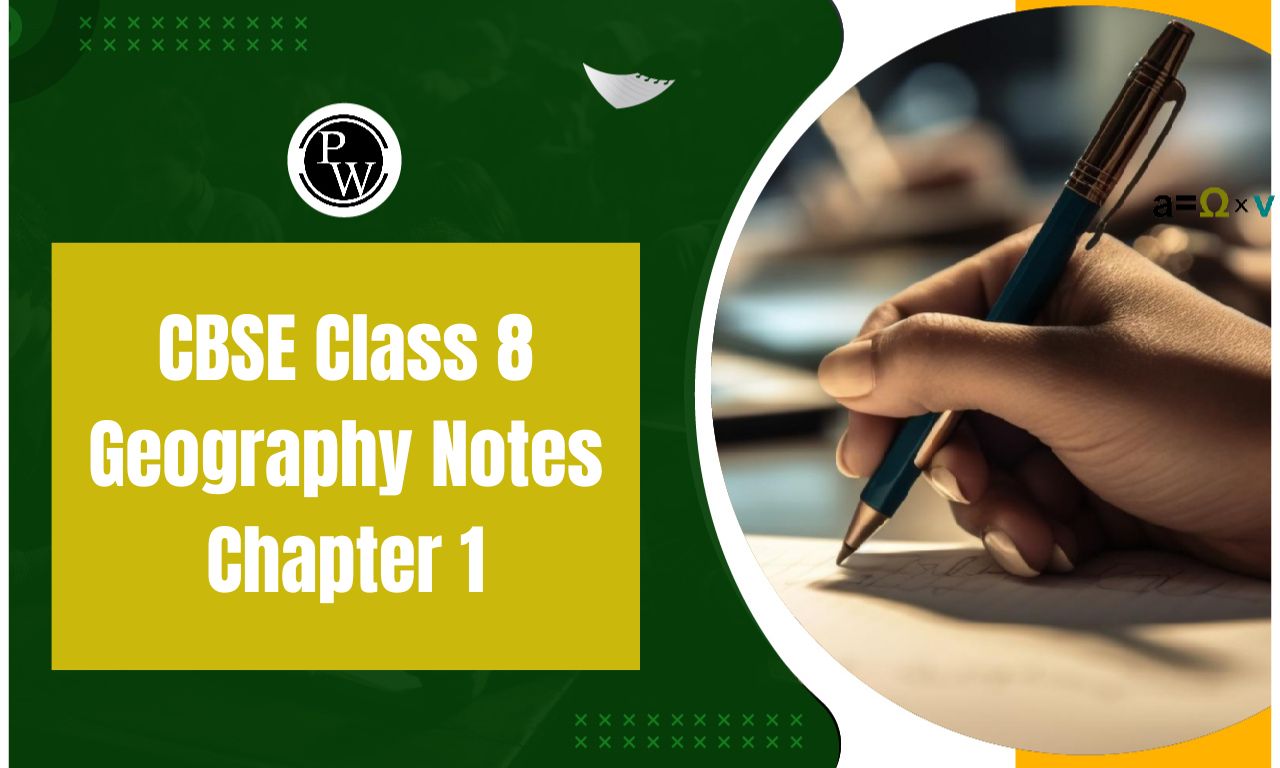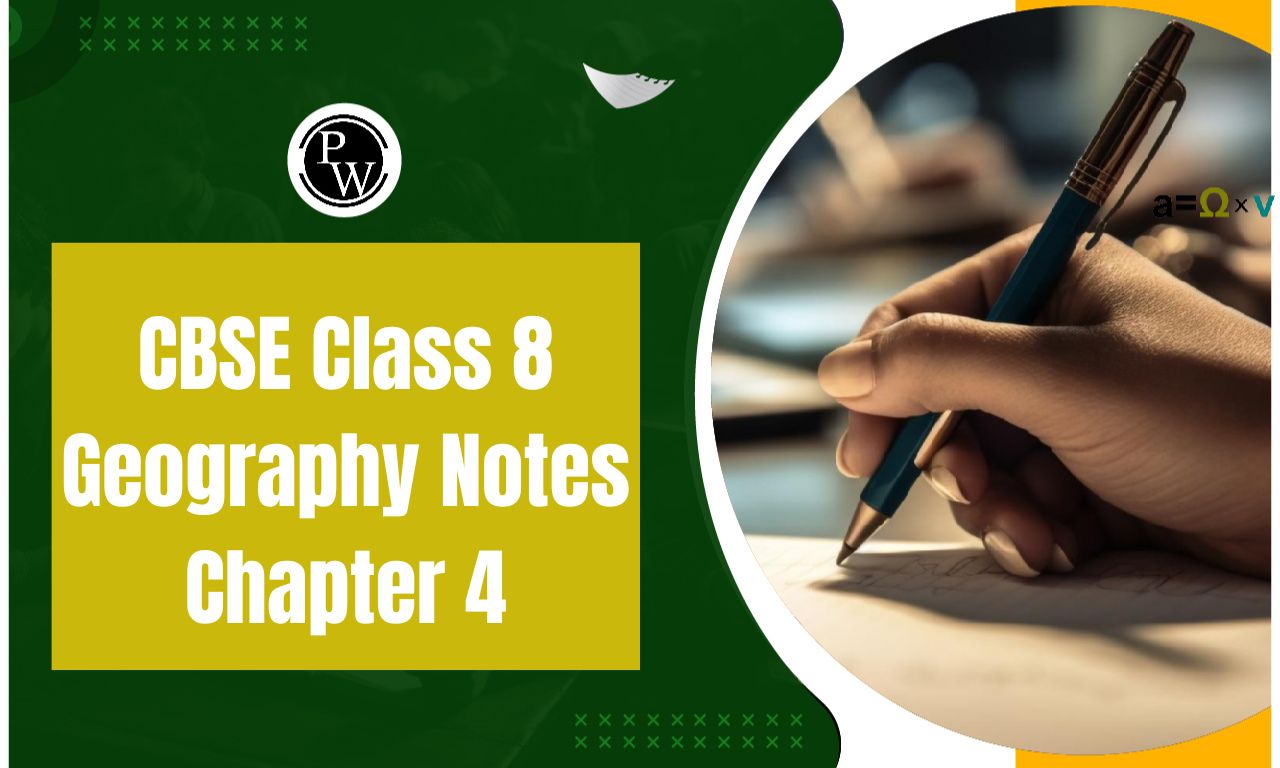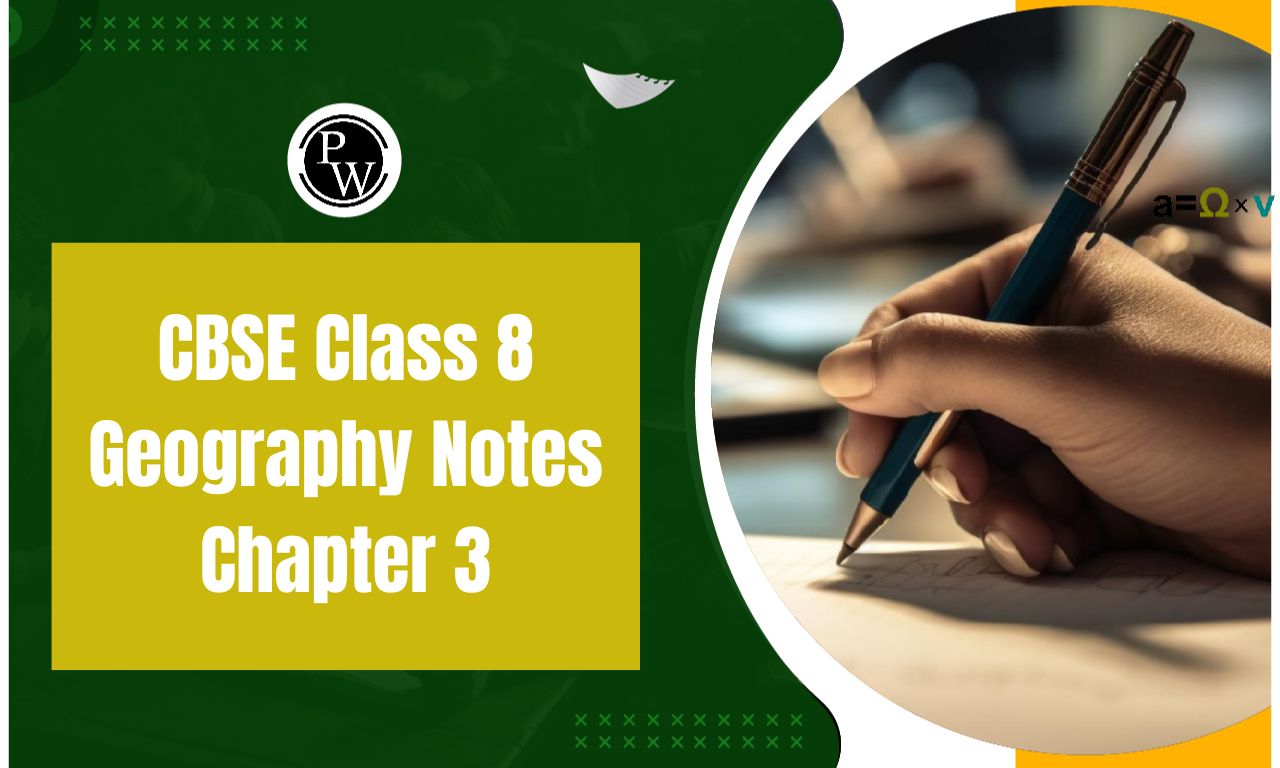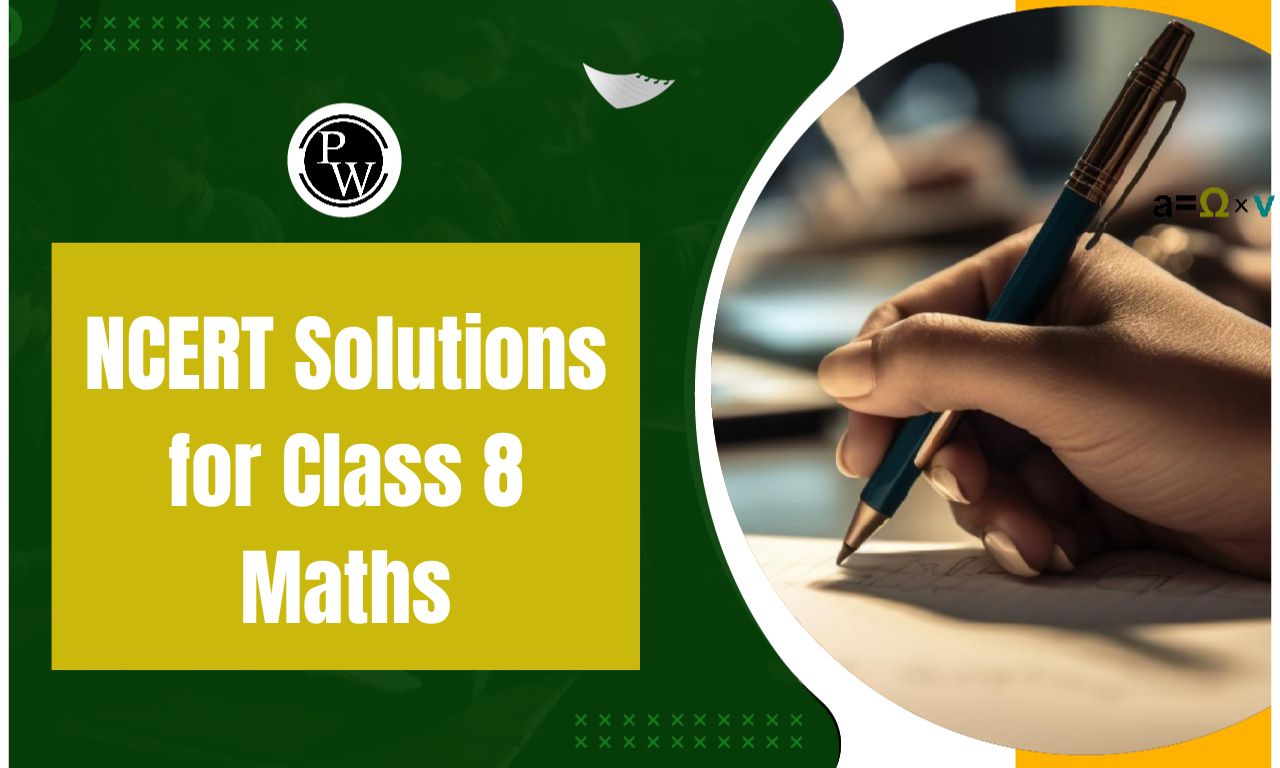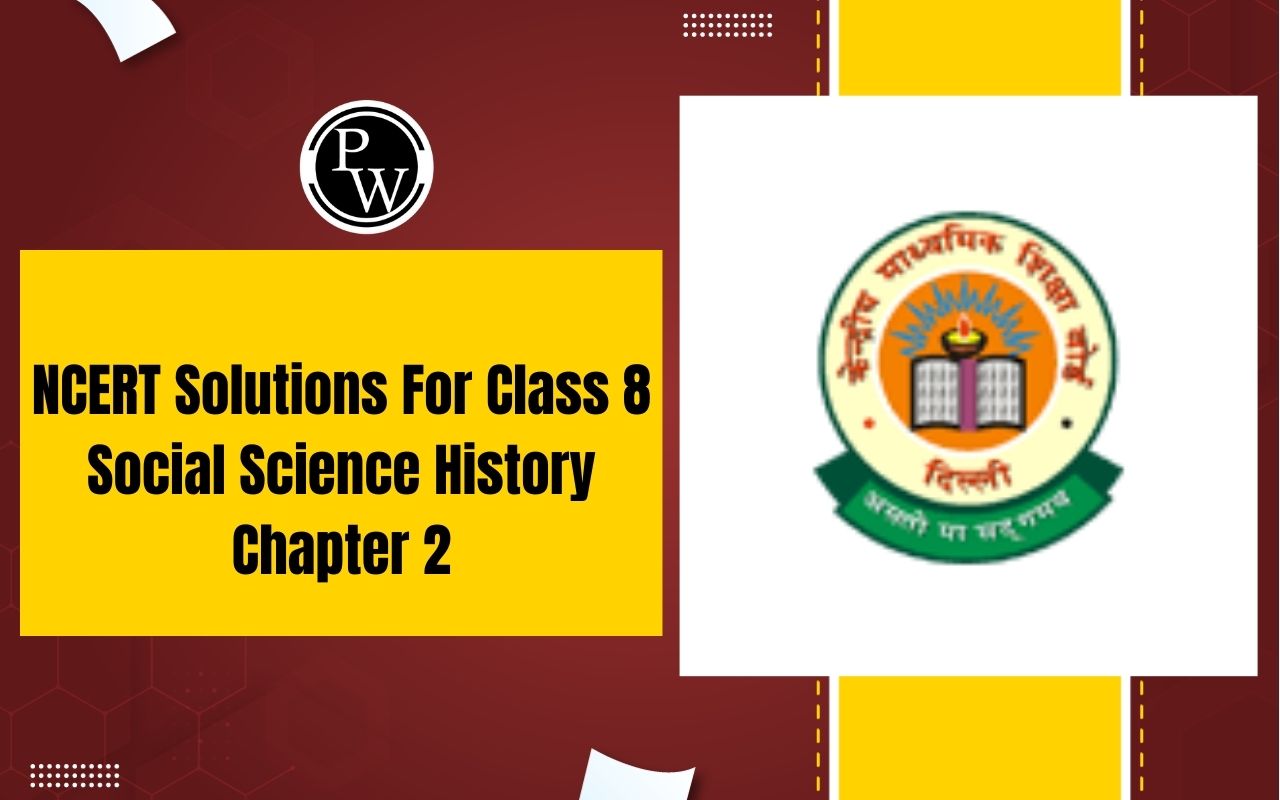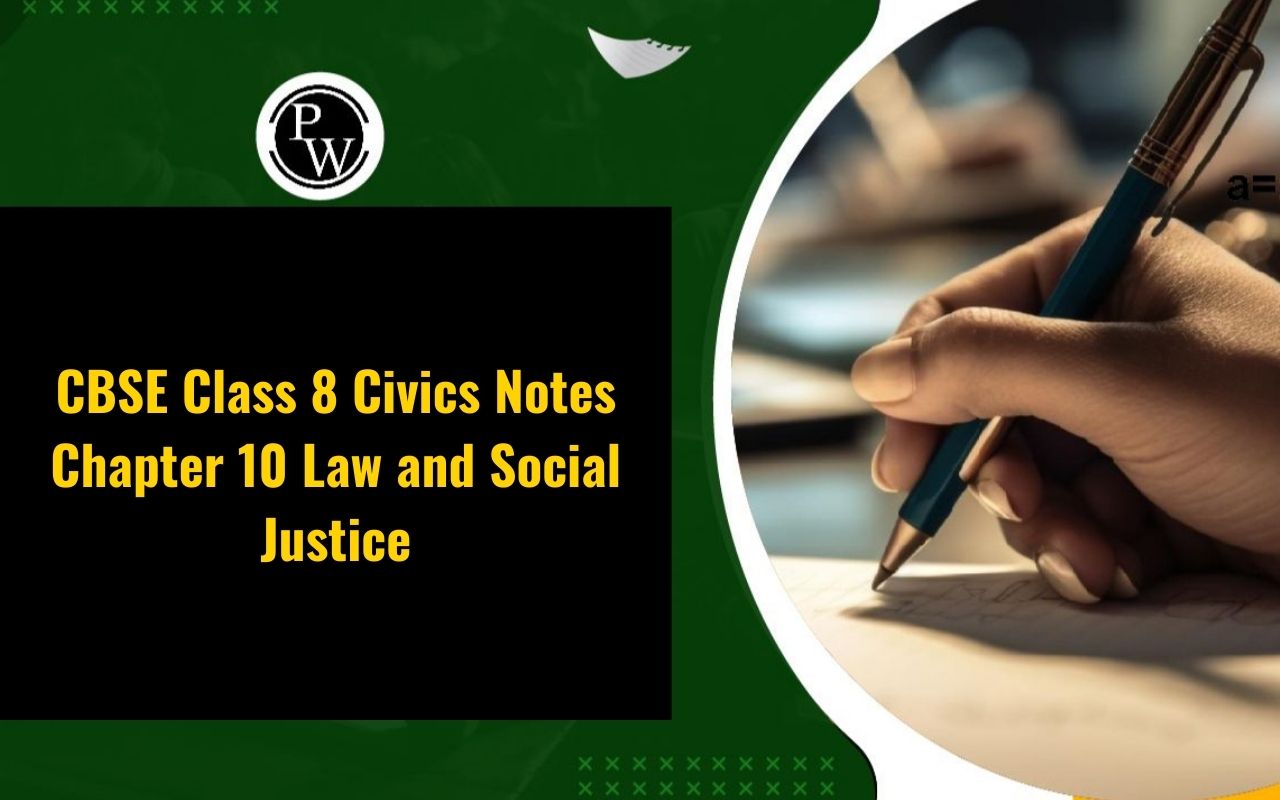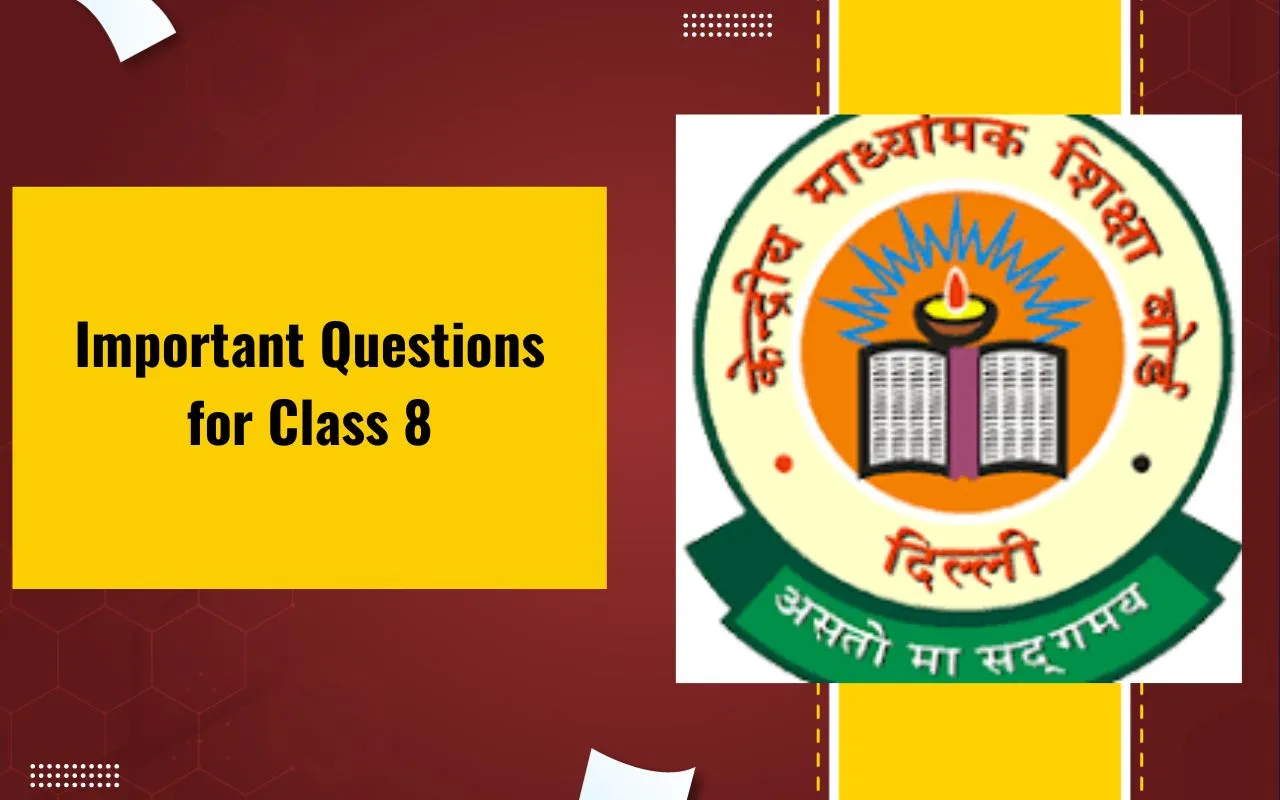
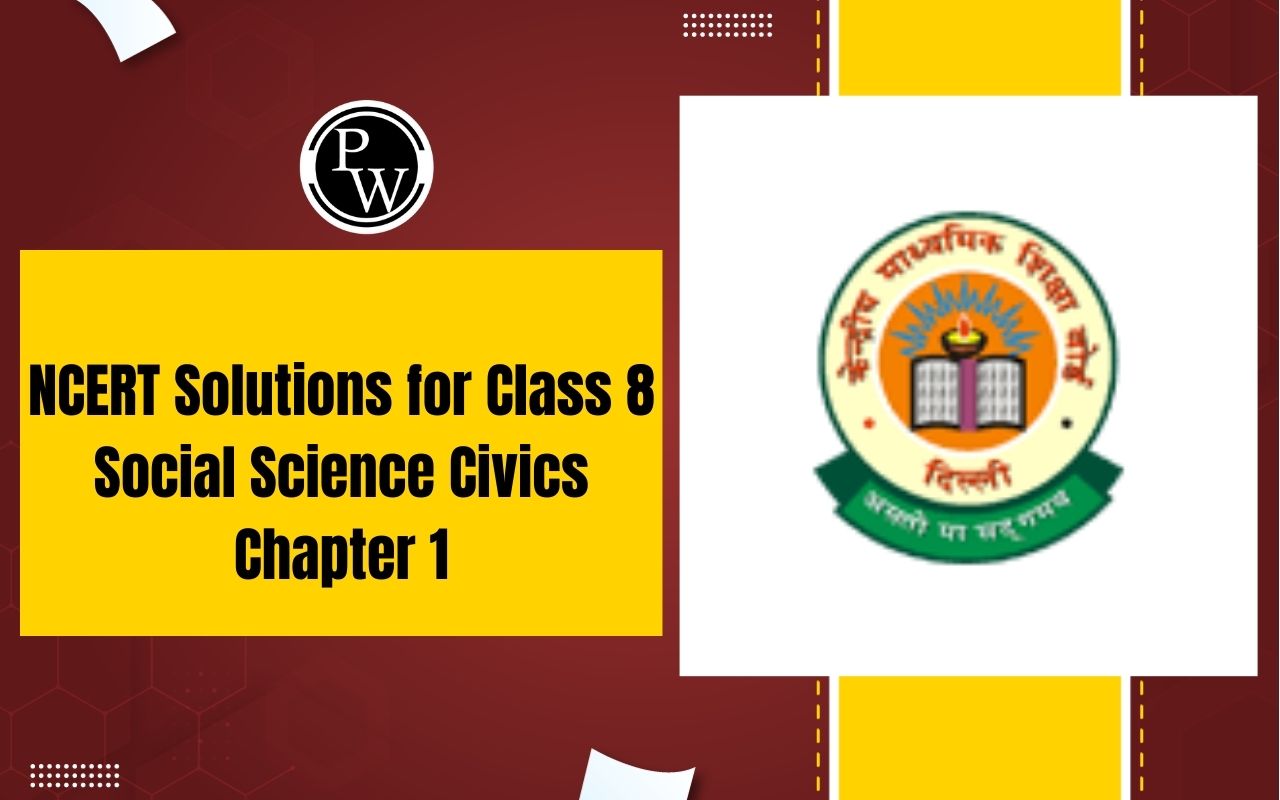
NCERT Solutions for Class 8 Social Science Civics Chapter 1: The NCERT Solutions for Class 8 Social Science Civics Chapter 1, "The Indian Constitution," help students understand the basics of our country's Constitution.
This chapter explains why a Constitution is important and talks about its main ideas like justice, liberty, equality, and fraternity. It also covers fundamental rights that every citizen has, rules for how the government should work to make society fair, and duties we all should follow. These solutions explain these ideas clearly so students can understand how our government and laws are supposed to work. Studying this chapter helps students see how our democracy is set up and what it means to be a responsible citizen in India.NCERT Solutions for Class 8 Social Science Civics Chapter 1 Overview
The NCERT Solutions for Class 8 Social Science Civics Chapter 1, prepared by subject experts at Physics Wallah, give a clear overview of "The Indian Constitution." These solutions help students understand the basic principles and structure of our country's Constitution. They explain important ideas like justice, liberty, equality, and fraternity, which are mentioned in the beginning of the Constitution. The solutions also talk about the rights every citizen has, the principles that guide how the government should work for the welfare of society, and the duties we should all follow. By studying these solutions, students learn how our government functions and what it means to be a responsible citizen in India.NCERT Solutions for Class 8 Social Science Civics Chapter 1 PDF
You can click the link below to access the PDF for NCERT Solutions for Class 8 Social Science Civics Chapter 1, which is titled "The Indian Constitution." This PDF provides clear explanations and answers to help you understand the basics of our Constitution, including concepts like justice, liberty, equality, and fraternity. It covers important topics such as fundamental rights, directive principles of state policy, and fundamental duties, which are crucial for understanding how our government works and what responsibilities citizens have.NCERT Solutions for Class 8 Social Science Civics Chapter 1 PDF
NCERT Solutions for Class 8 Civics Chapter 1 The Indian Constitution
Here are the detailed NCERT Solutions for Class 8 Civics Chapter 1 – The Indian Constitution:NCERT Solutions for Class 8 Civics Chapter 1 Exercises
1. Why does a democratic country need a Constitution?
Answer: Here are the reasons why a democratic country needs a Constitution:
- Defining Basic Ideals : The Constitution outlines the fundamental principles and values that guide citizens' lives in the country. It reflects the aspirations and shared beliefs of the people.
- Defining the Nature of Society : It defines the fundamental nature of society, including principles of justice, equality, and liberty. It sets the foundation for how individuals interact with each other and with the government.
- Defining the Political System : The Constitution establishes the political system of the country, including the structure of government, roles of different branches (like legislature, executive, judiciary), and their powers and responsibilities.
- Ensuring Peaceful Co-existence : It provides a framework of rules and laws that ensure peaceful co-existence among people from diverse religions, communities, and backgrounds. It protects the rights of individuals and groups, promoting harmony and unity in diversity.
2. Look at the wordings of the two documents given below. The first column is from the 1990 Nepal Constitution. The second column is from the more recent Constitution of Nepal.
| 1990 Constitution of Nepal Part 7: Executive | 2015 Constitution of Nepal Part 7: Federal Executive |
| Article 35: Executive Power: The executive power of the Kingdom of Nepal shall be vested in his Majesty and the Council of Ministers | Article 75: Executive Power: The Executive Power of Nepal shall, pursuant to this Constitution and law, be vested in the Council of Ministers |
What is the difference in who exercises ‘Executive Power’ in the above two Constitutions of Nepal?
Answer: The shift in Nepal's constitutional provisions between 1990 and 2015 reflects a significant change in governance and power distribution:
3. What would happen if there were no restrictions on the power of elected representatives?
Answer: In a democracy, citizens play a crucial role in electing their leaders, who are entrusted with the responsibility to govern and make decisions on behalf of the people. However, there is always a risk that those in positions of power may misuse their authority for personal gain or other improper purposes. To prevent such misuse and safeguard the country's interests, the constitution includes several important measures:
- Separation of Powers : The constitution divides power among different branches of government—legislative, executive, and judiciary. This separation ensures that no single branch has unchecked authority, promoting a system of checks and balances.
- Fundamental Rights : Constitutions often guarantee fundamental rights to citizens, such as the right to freedom of speech, right to equality, right to life and liberty, etc. These rights serve as a safeguard against arbitrary actions by the government and protect citizens from abuse of power.
- Independent Judiciary : A strong and independent judiciary ensures that laws are interpreted fairly and applied impartially. It acts as a check on the executive and legislative branches, ensuring that their actions comply with constitutional principles.
- Accountability Mechanisms : Democracies establish mechanisms for holding leaders accountable for their actions. This may include regular elections, parliamentary oversight, transparency in government operations, and mechanisms for citizens to challenge government decisions through legal means.
- Constitutional Amendments and Judicial Review : Constitutions often allow for amendments to adapt to changing circumstances. Judicial review empowers courts to declare laws unconstitutional if they violate the principles enshrined in the constitution, thereby preventing legislative overreach.
4. In each of the following situations, identify the minority. Write one reason why you think it is important to respect the views of the minority in each of these situations.
(a) In a school with 30 teachers, 20 of them are male.
Answer: In a school with 30 teachers, 20 of them are male.
- Minority: The minority here comprises the 10 female teachers.
- Importance of respecting their views: It's crucial to respect the views of the female teachers because decisions that affect the school environment, teaching methodologies, or policies should consider the perspectives and experiences they bring. Ignoring their viewpoints could lead to policies that inadvertently disadvantage or overlook issues important to female teachers, such as work-life balance, gender equity, and teaching methodologies that cater to diverse learning styles.
(b) In a city, 5 per cent of the population are Buddhists.
Answer: In a city, 5 per cent of the population are Buddhists.
- Minority : The minority here is the 5% Buddhist population.
- Importance of respecting their views : Respecting the views of the Buddhist population is important because decisions impacting public policies, cultural events, religious freedoms, and community celebrations should acknowledge and accommodate the beliefs and traditions of all residents. Disregarding their perspectives could lead to feelings of exclusion, cultural insensitivity, or religious discrimination, undermining social cohesion and harmony in the city.
(c) In a factory mess for all employees, 80 per cent are vegetarians.
Answer: In a factory mess for all employees, 80 per cent are vegetarians.
- Minority : The minority here comprises the 20% of non-vegetarians.
- Importance of respecting their views : It is important to respect the views of non-vegetarians in the factory mess because dietary preferences and choices are personal and cultural. Providing food options that cater to both vegetarians and non-vegetarians ensures that all employees feel valued and accommodated. Ignoring the dietary preferences of non-vegetarians could lead to dissatisfaction, reduced morale, and a sense of exclusion in communal eating spaces.
(d) In a class of 50 students, 40 belong to more well-off families.
Answer: In a class of 50 students, 40 belong to more well-off families.
- Minority : The minority here consists of the 10 students from less well-off families.
- Importance of respecting their views : Respecting the views of students from less well-off families is crucial because decisions regarding school activities, field trips, and educational resources should be inclusive and accessible to all students. Considering their perspectives ensures that they are not excluded from educational opportunities due to financial constraints. Ignoring their viewpoints could perpetuate disparities and hinder their academic and social development.
5. The column on the left lists some of the key features of the Indian Constitution. In the other columns, write two sentences, in your own words, on why you think this feature is important.
Answer:
| Key Feature | Description | Significance |
|---|---|---|
| Federalism | Organizes a country into different levels of government (local, state, central), each with distinct powers and responsibilities. | Allows governance tailored to local needs, accommodates regional diversity, promotes local autonomy, and ensures decisions are made closer to the people. |
| Separation of Powers | Divides government into three branches: legislature (makes laws), executive (implements laws), and judiciary (interprets laws and resolves disputes). | Prevents concentration of power, ensures checks and balances among branches, promotes accountability, and safeguards against misuse or abuse of authority. |
| Fundamental Rights | Essential rights guaranteed to every citizen, including freedom, equality, protection against exploitation, religious freedom, cultural and educational rights. | Ensures equal treatment under the law, protects against discrimination and exploitation, empowers citizens to challenge violations, and promotes social justice. |
| Parliamentary Form of Government | Citizens elect representatives through universal adult suffrage to the legislature (parliament). | Promotes inclusivity in decision-making, ensures representation of diverse interests, empowers citizens through voting rights, and strengthens democratic participation. |
Chapter 1 – The Indian Constitution Summary
Benefits of NCERT Solutions for Class 8 Social Science Civics Chapter 1
- Clear Understanding : These solutions help you understand the Indian Constitution better. They explain its important parts like federalism, separation of powers, fundamental rights, and secularism in an easy way.
- Helpful for Exams : You can use these solutions to prepare for your exams. They cover all the topics from the chapter and show you how to answer questions effectively.
- Structured Learning : NCERT Solutions are organized neatly. They guide you through the chapter step by step, making it easier to follow and learn from.
- Improves Thinking Skills : By using these solutions, you learn to think critically. You can analyze different parts of the Indian Constitution and understand why they are important.
NCERT Solutions For Class 8 Social Science Civics Chapter 1 FAQs
What is the Indian Constitution?
Why is the Constitution important in a democratic country?
Why is federalism important in India?
How does the Indian Constitution protect fundamental rights?
What role does secularism play in the Indian Constitution?

